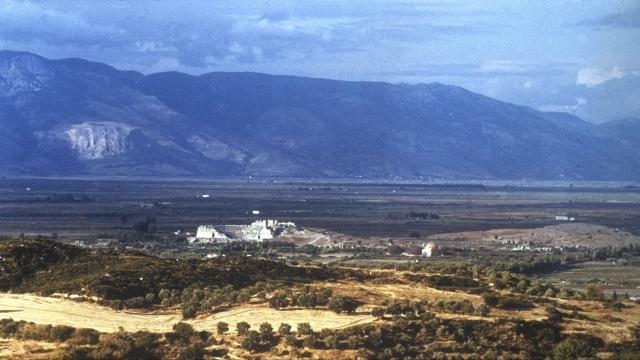
In the Archaic period (seventh and sixth centuries B.C.) the Ionian city of Miletus was a metropolis in the true sense of the word. As one of the largest Greek cities of the age it stretched over a huge area at the entrance of the Latmic gulf, which provided excellent harbour facilities and an important trade route through the Meander valley into central Anatolia. The growth of the population soon led to colonization activities especially in the Propontis and the Black Sea Region, where dozens of trade posts and settlements were founded. But the commercial connections also stretched to the South with the foundation of the important trade post of Naucratis in the Nile delta and to the West, where Milesian products have come to light in increasing numbers in Italy, namely at the Etruscan port of Gravisca.
One of the main aims of the recent German archaeological investigations at Miletus was the uncovering and investigation of buildings from the Archaic period, when the city reached the peak of its wealth and power. Earlier excavations had uncovered structures connected with various commercial activities in the centre of the city. Here the settlement pattern developed from isolated houses on curvilinear foundations to rectilinear complexes and finally resulted in the famous so called Hippodamian system with its rectilinear street grid, which can now be traced back into the Archaic period. The focal point of the most recent excavations, however, was a densely settled habitation and industrial quarter at the so called Kalabaktepe, a steep hill at the southwest edge of the Archaic city. This area contained industrial establishments in the form of several pottery kilns surrounded by a massive wall which protected the city´s landward side. The first houses with walls built on massive stone socles were erected in the first half of the 7th century B.C., and until the area’s abandonment in the 5th century seven main construction phases can be identified. The remains give an important insight into the inhabitants’ living conditions and the changes the settlement underwent during the Archaic period. The finds from the levels connected with the buildings, which also contain imported pottery, provide new possibilities of dating the locally produced wares.
Location
Speakers
- Prof Reinhard Sneff (DAI: German Archaeological Institue, Athens)
Contact
- Estelle Strazdins